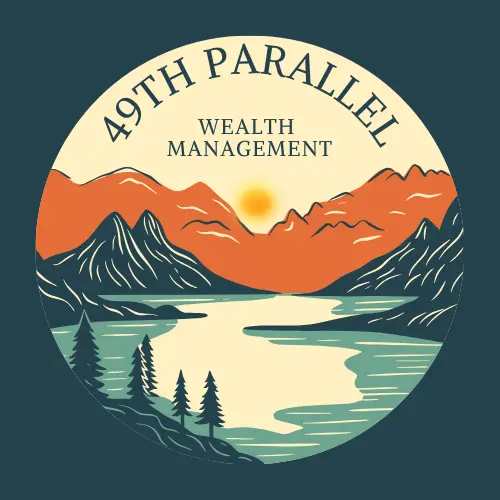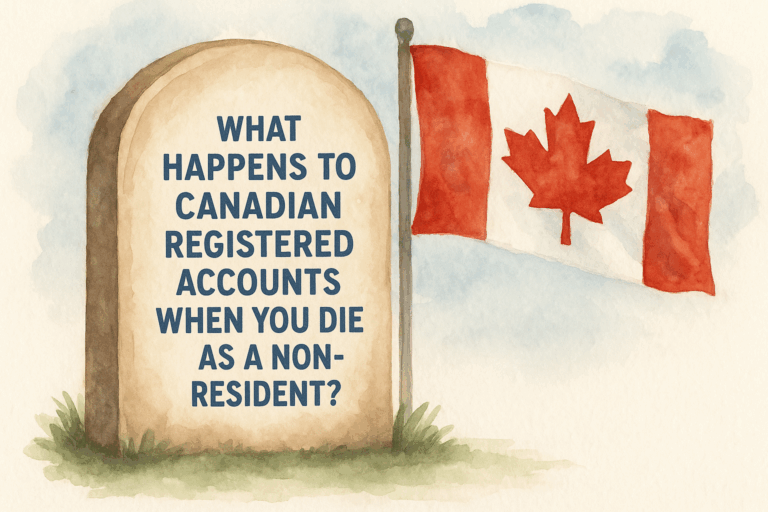Strategic Retirement Planning Across the U.S. and Canada: Enhancing Pension Management and Accessibility
As I navigate the complexities of tax planning for retirement, I recognize its growing importance in today’s aging and increasingly mobile society. Many individuals manage assets and plan for retirement across borders, particularly between the U.S. and Canada. These two nations share strong economic ties and significant cross-border activity, which can complicate retirement planning. Effective tax planning is key to maximizing savings and minimizing tax liabilities, especially for those with cross-border concerns.
At 49th Parallel Wealth Management, where I work, we excel at developing tailored retirement strategies. My role involves crafting tax plans that maximize benefits and minimize complications for clients with investments in both countries. Understanding how to manage pensions and access retirement funds is essential, and I take pride in assisting clients as they prepare for a secure future.
The Importance of Cross-Border Retirement Planning
Cross-border retirement planning is crucial for several reasons:
- Regulatory Compliance: I make sure to meet the legal and tax obligations in both countries. This approach saves me from costly penalties and helps maximize my benefits.
- Income Optimization: By managing my retirement funds effectively across borders, I optimize income streams in both U.S. and Canadian dollars.
- Risk Management: I diversify my retirement savings and stay informed about the economic conditions in both countries. This strategy helps me reduce financial risk.
Key Strategies for Retirement Planning Between the U.S. and Canada
1. Understand the Pension Systems
Navigating the pension systems of both the U.S. and Canada is crucial for anyone planning retirement in these countries. The U.S. has Social Security, while Canada offers the Canada Pension Plan (CPP) and Old Age Security (OAS). It’s essential to figure out how these can work together, especially if I’ve worked in both countries. Knowing the available benefits can help me plan my retirement more effectively.
2. Tax Treatment of Retirement Savings
Understanding the tax implications is vital to avoid unnecessary payments. The tax treaties between the U.S. and Canada aim to prevent double taxation of retirement income. For instance, Roth IRAs and Tax-Free Savings Accounts (TFSA) provide tax-free growth and withdrawals, but I must manage them carefully to preserve their benefits. Understanding these details can ensure I maximize the growth of my savings.
3. Managing Retirement Accounts
Managing retirement accounts in both countries requires attention to detail. I need to be aware of the rules for accounts like a 401(k) in the U.S. and an RRSP in Canada. Knowing the implications of fund rollovers, Tax Implications of RRSP Withdrawals for U.S. Residents, and minimum distribution requirements can help me avoid any financial pitfalls.
4. Accessing Retirement Fund
It’s important to know when and how to access retirement funds without facing harsh penalties. Both countries have different rules for the age and conditions under which I can start withdrawing savings. Knowing these guidelines helps me make timely withdrawals and maintain financial security during retirement.
Practical Steps to Effective Cross-Border Retirement Planning
1. Consult with Cross-Border Financial Advisors
I engage with specialists in cross-border financial planning. These professionals help navigate the complexities of U.S.-Canada retirement systems, offering advice tailored to my needs.
2. Regularly Review Your Retirement Plan
I find it crucial to regularly revisit my retirement plan. This ensures that I stay ahead of changes in tax laws and economic conditions. Reassessing my strategy helps me to adjust for fluctuations in both currency exchange rates and market dynamics.
3. Plan for Healthcare Need
Healthcare planning is a priority. Understanding the scope of Medicare and provincial healthcare is vital. I consider supplemental insurance to cover any gaps, ensuring comprehensive health coverage during my retirement years.
Case Study: Retirement Planning for a U.S.-Canada Dual Citizen
Managing retirement as a U.S.-Canada dual citizen presents unique challenges. This involves dealing with two pension systems and understanding the tax implications in both countries. Over my career, I’ve realized how critical it is to have a strategic approach to these complexities.
First, it’s essential to determine eligibility for pensions from both nations. This ensures that individuals receive the maximum benefits they are entitled to. Analyzing the expected retirement income from these pensions is a key step. Knowing what to expect can vastly improve long-term planning.
Tax-efficient withdrawal strategies are crucial. Withdrawing funds from retirement accounts in both countries can have significant tax consequences. Working closely with a financial advisor can help manage these implications.
Pension Management Tips:
- Understand Eligibility: Know the requirements for both U.S. and Canadian pensions.
- Plan Withdrawals: Consider tax implications in both countries.
- Consult Experts: Seek advice from cross-border financial advisors for personalized strategies.
I’m committed to helping clients navigate retirement planning challenges. At 49th Parallel Wealth Management, I provide support tailored to individual needs. For insights into cross-border insurance, visit Securing the Right Insurance Coverage Across U.S. and Canadian Borders.
Frequently Asked Questions
What are the most tax-efficient strategies for withdrawing from retirement accounts?
When planning withdrawals, I always consider the most tax-efficient strategies. One approach is to prioritize withdrawals from taxable accounts first, deferring withdrawals from tax-deferred accounts like 401(k)s or IRAs. This can help manage your tax bracket each year. Additionally, balancing this strategy with Roth IRA withdrawals, which are typically tax-free, can optimize total savings over time.
How should one approach retirement withdrawals to optimize pension management?
In optimizing pension management, I focus on understanding the rules and benefits specific to my pension plan. I evaluate the option of delayed withdrawals for potentially higher future payouts. Using a mix of pension income and personal savings also helps in securing a stable cash flow.
What are the primary differences between U.S. and Canadian pension plans?
Between U.S. and Canadian pension plans, there are several key differences. In Canada, the public pension system includes the Canada Pension Plan (CPP) and Old Age Security (OAS), offering basic income in retirement. In contrast, the U.S. relies heavily on Social Security. Each system has its eligibility requirements and benefits, which I need to understand based on where I reside or have contributed.
What is considered an adequate retirement savings target for a comfortable retirement in Canada?
A common guideline I follow is aiming to replace 70-80% of my pre-retirement income. To determine an adequate savings target, I take personal expenses, lifestyle preferences, and expected income from CPP/OAS into account. It’s crucial to adjust this target based on changes in life circumstances and inflation.
How does the $1000 a month retirement rule apply to strategic retirement planning?
The $1000 a month retirement rule is a guideline suggesting that for every $1000 of monthly income desired in retirement, I need to save approximately $240,000. This rule assumes a 5% withdrawal rate and helps me visualize my savings needed for monthly income goals.
What resources or calculators are available to assist with retirement withdrawal planning?
There are various resources available to assist me in retirement withdrawal planning. Online calculators can be useful in projecting savings and withdrawal rates. The IRS Retirement Plans FAQs provide important information. For Canadians, resources like A Guide to Retirement Planning can be valuable.
- Securing the Right Insurance Coverage Across U.S. and Canadian Borders
- The Evolving Role of Technology and the Primacy of Client Relationships
- Navigating Business Expansion and Operations Across Borders: Insights for U.S. and Canadian Enterprises
- Optimizing Banking and Financial Services for Cross-Border Clients: Navigating U.S. and Canadian Markets
- Lucas Wennersten, CFA, CFP® (U.S. & Canada)



